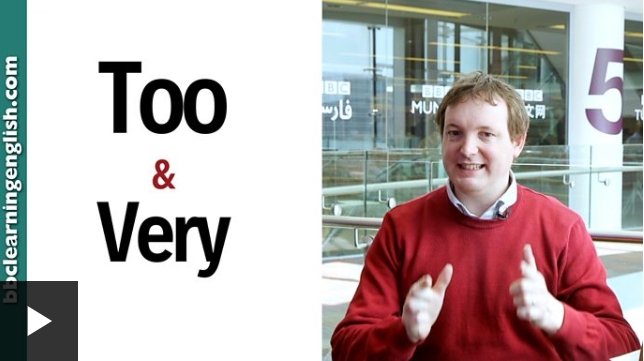Do you have a minute to spare to learn some English? Watch Phil explain exactly how to use too and very. Give us 60 seconds and we’ll give you the English!
Phil
Hi, I’m Phil from BBC Learning English. Today I’m going to tell you how to use too and very.
They are both intensifiers – but they don’t mean the same thing. We use very to make an adjective, or an adverb stronger. So we can say, The building is very old. That could be a good thing. It’s beautiful. Or it could be a bad thing – it’s falling down.
Or it might not matter. If we use too (with two Os), then it means it’s a problem.Could say, It’s too easy. It means ‘it’s a waste of time’. It’s a problem! It’s not too difficult – in fact, it’s very easy. Just remember that if we use too, it’s a problem.
Too and Very
Both too and very are intensifiers. They are used to make adjectives and adverbs stronger.
Very
When we use very, it’s not clear whether what we are describing is a good or a bad thing.
- The building is very old.
This could be a good thing: ‘the building is old and beautiful’. It could also be a bad thing: ‘the building is old and falling down’.
Too
When we use too, it means there’s a problem.
- The building is too old.
This is a bad thing. The building is too old. It might fall down and could be dangerous.
